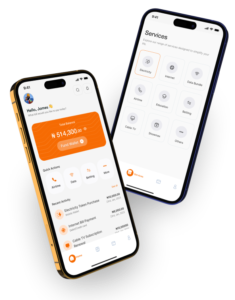The Capital Needs of Crypto Mining
Cryptocurrency mining has gained a lot of attention recently. As China banned all mining operations, many companies and individuals were forced to either sell their equipment or relocate. But not many jurisdictions have cheap electricity and cold climates like China, which are important factors in the profitability of a crypto mining operation.
Electricity is a key component to the mining business — powering hundreds of ASIC miners is not cheap and can carry environmental consequences. Heat is also a significant source of costs and pollution, and hence colder countries have a natural advantage in the industry for a large part of the year.
Crypto mining is an infrastructure-reliant venture. Although internal rates of return can often exceed 75% (meaning most projects can break even within 2 years), upfront capital is required in order to source equipment, storage, and build infrastructure for the project. And for companies that are long Bitcoin, selling their revenues in order to reinvest is not an appealing option.
Furthermore, crypto companies can be very profitable for investors looking to enter at a lower valuation than what they would get in the public markets. The discrepancy between private and public valuations is huge, and although larger companies benefit tremendously from economies of scale (cheaper access to ASICs, pre-existing infrastructure, trade secrets) the multiple on the valuations is still very large.
This is where equity investors and lenders play an integral role. Due to the latest bullish trend in Bitcoin, mining projects are frequently offering higher than expected returns.
This means debt is paid off on time, and equity investors benefit from both the profitability of the mining business and the rise in Bitcoin price. This is the 21st century equivalent to “Don’t buy gold, buy a mining company!”
Digital Securities as a Solution
The very same technology being powered by these mining businesses can also allow them to raise the capital they need to finance capital expenditures.
Digital securities (regulatory-compliant securities issued on the blockchain) are allowing issuers to raise capital at lower costs, and helping investors access more liquidity in secondary markets thanks to tokenization.
By raising capital on the blockchain, crypto mining companies benefit from higher degrees of flexibility, allowing them to fractionalize their operations and take advantage of different funding structures.
Further, as they connect to secondary venues, they can either buy back their shares or decide to issue more to a larger pool of investors. Issuers also gain access to investors from other jurisdictions, and potentially more capital.
Crypto mining companies that are not large enough to access the traditional stock markets have to raise capital privately. They have 3 options in doing so:
- Borrowing capital: there are a lot of avenues for borrowing capital at relatively high interest rates, and the advantage of this structure is that after paying off all the debt, equity-holders are not diluted at all. They will receive 100% of the cash flows generated by the project onwards. But as ASICs get older, there is also a tradeoff in terms of mining efficiency over time. The caveat is that if the debt is paid off at the start of the project, equity-holders will be left with less efficient machines when it’s their time to collect cash-flow.
- Offering equity: there are lots of savvy investors looking to gain exposure to the crypto mining sector, and they have many avenues to do so. For the firms themselves, it only makes sense to raise capital via equity if they can get a valuation that is worth giving away their cash flows. Alternatively they can offer equity on specific, ring-fenced mining projects that are separate from the corporate entity that carries the main operations.
- Revenue sharing: this structure has recently become popular, as it gives crypto mining firms the ability to retain equity (which is a good idea if they want to eventually IPO and get the type of valuation offered by public markets) while giving investors the rights to their cash (Bitcoin) flows.
Digital securities offer the ability to track a cap-table well beyond its issuance, and as the securities trade in secondary markets, entitled investors can receive the dividends from the mining straight into their wallets without the need for extensive manual processes. If these dividends are paid in crypto, then investors can use the same wallets where they hold their ERC-20 tokens.











